FUC urbanism
I like getting out into what might qualify as extreme Lexington weather. Torrential rains often find me seeking out city springs and drainage ditches, or floating a few of our otherwise un-paddleable area creeks and runs. Big snows get me to Hisle Park, the Arboreteum, or one of several Jessamine or Garrard County nature preserves that girdle Pool 7 of the Kentucky River. It is not uncommon for single digit night-time lows to induce long, quiet, circuitous, night-time city walks, an improvement (my wife thinks) over my mid-Aughts penchant for mid-winter plunges into the already-frigid tailwaters of the Dix River, a hobby I still harbor dreams of reviving.
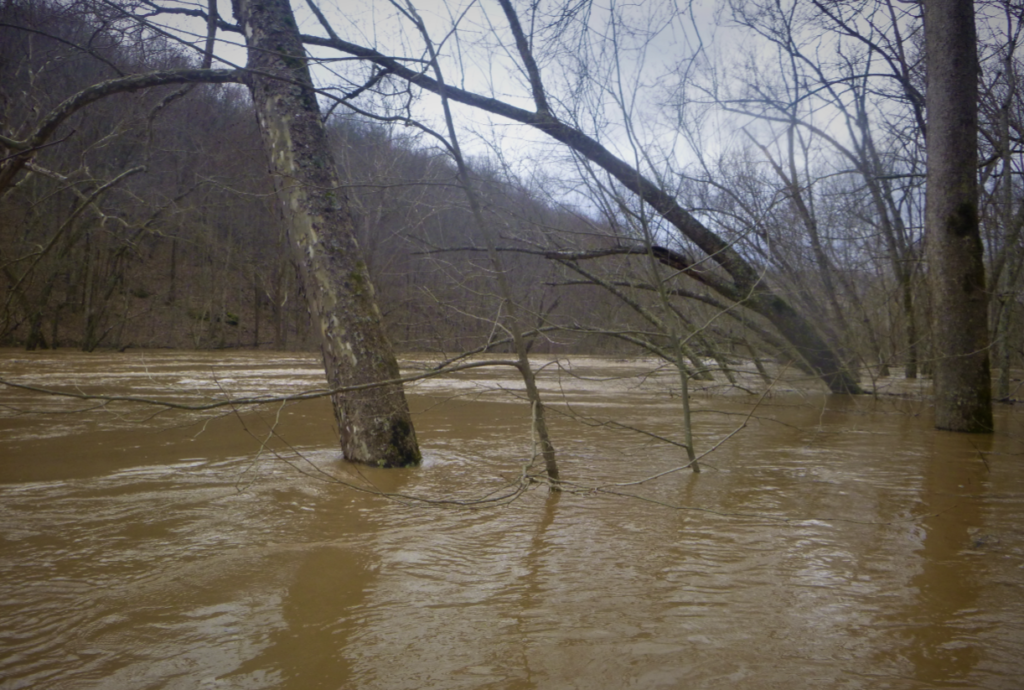
Predictably, last month’s weather of arctic ice and snow pushed me out of the house. Now a 21-year resident of Lexington, I am savvy enough to know what to look for during these moments, and also where to look.
Ice storms deliver to the enterprising Fayette Urban County urbanist a wondrous visual and aural landscape—but also, lots of wood. If you are fortunate (and most of us reading this are), that wood has not punctured the roof of your home, nor calved the roof of your car, and you can appreciate its scattering along city streets, parks and lawns as both aesthetic oddity and Fayette County bounty.
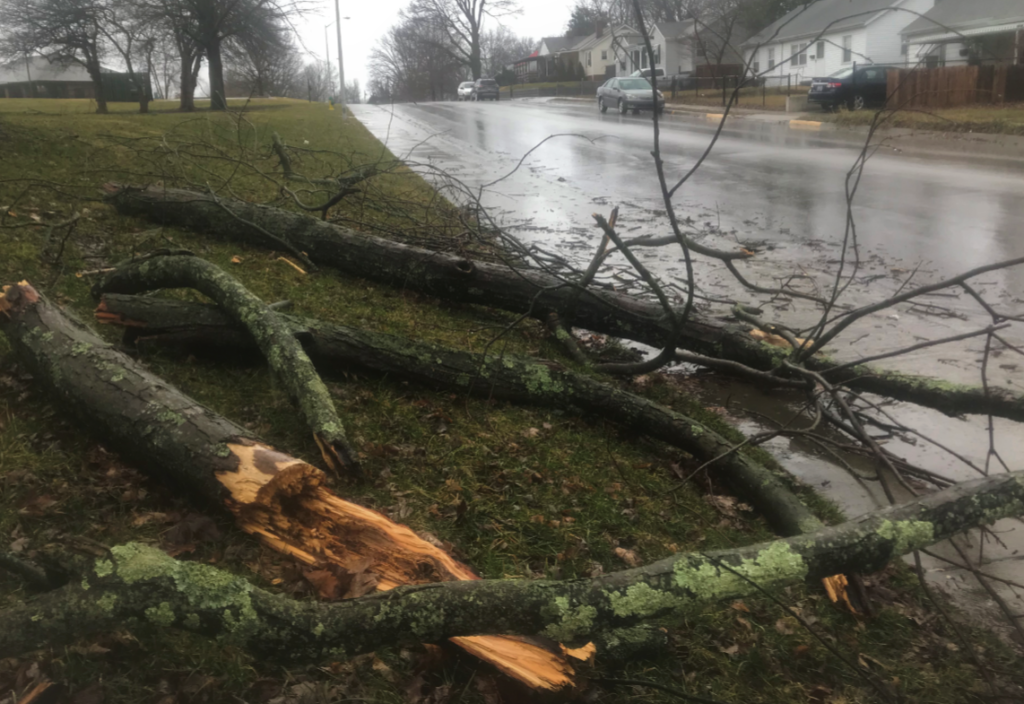
Road wood is, generally speaking, not architectural wood. You will not be constructing your iconic home addition or elegantly-appointed she-shed with road wood. Though healthy, straight trees can and do topple, and you may indeed find some choice slabs to store and dry for a year, ice storms generally target the dead, the leaning, the dying and the sick amongst our city’s high canopy.
While not structural per se, such wood can hold a surprising amount of value for the discerning FUC urbanist. At the pedestrian level, light and slender tree branches are easily gathered by the armload or wheelbarrow-ful, transported home, and covered with a tarp for Spring and Fall backyard (or, what the hell, it’s the 21st century, frontyard) fires.
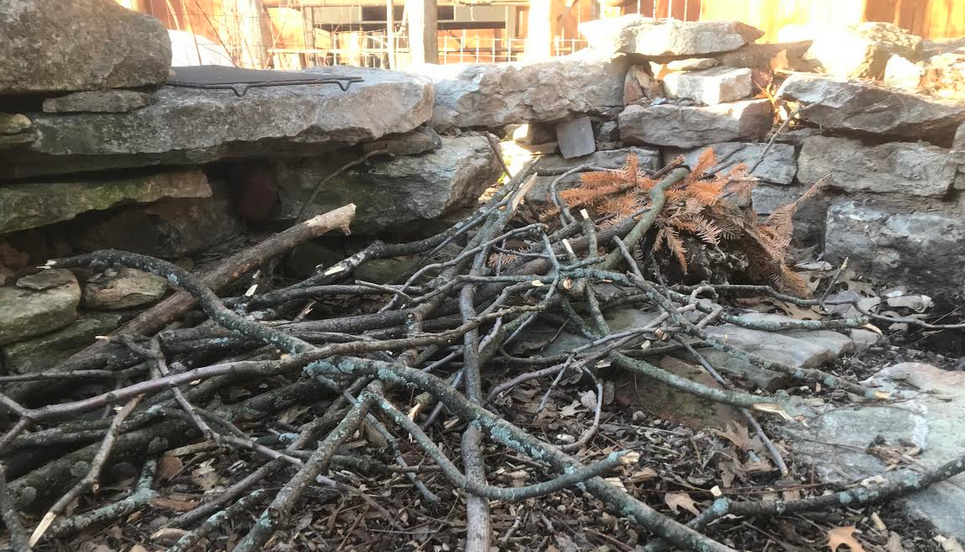
For those with access to cars or trucks and a $20 folding handsaw, larger branches up to 6 inches in diameter can be cut for those more serious and longer-lasting fires. Bring a friend and invest in an axe and a maul, and some of those larger road stumps can be rolled or thrown into a truck bed and stored (dry) for even better firewood and—a health bonus—the great aerobic and stress-smashing cold-weather exercise of chopping logs.
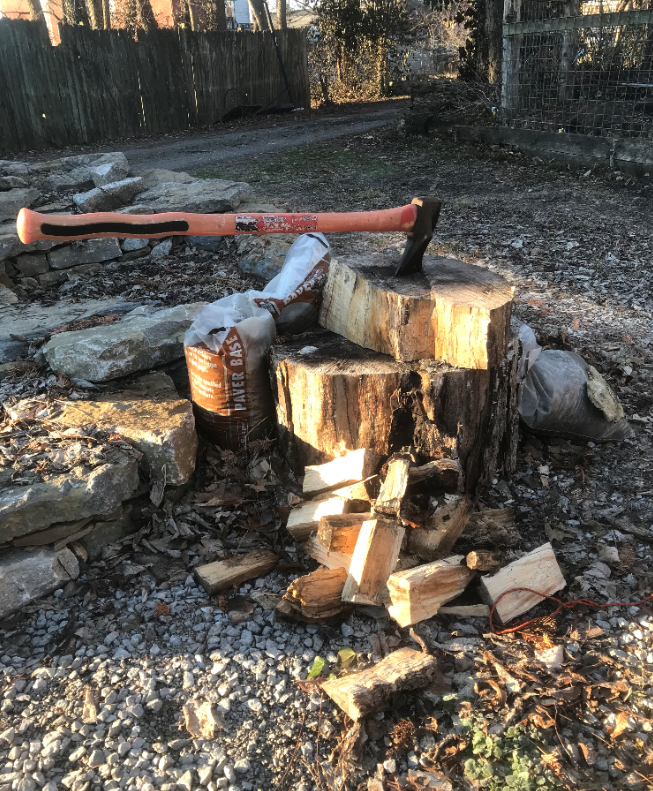
Road wood need not become firewood. The striated smaller shards of weathered, centuries old stumps can, with a little tongue oil and an artistic eye, make for some fetching home tchotchkes. A slim, five-foot run of a felled, upper-canopy pine or poplar branch, angled just so, can (with pocket-knife, sand-paper, more oil) metamorphosize into a walking stick, useful for continuing your foul weather peregrinations. Heavy, circular wood blocks are future outdoor tables; a three-foot cylinder of a trunk (for the chain-sawed among us) awaits a halving into two three-foot benches, or a Kiptoo Tarus arbor-sculpture depicting Henry Clay’s tomb. Grab enough road wood, and you got yourself a heck of a start on a FUC’in stumpery.
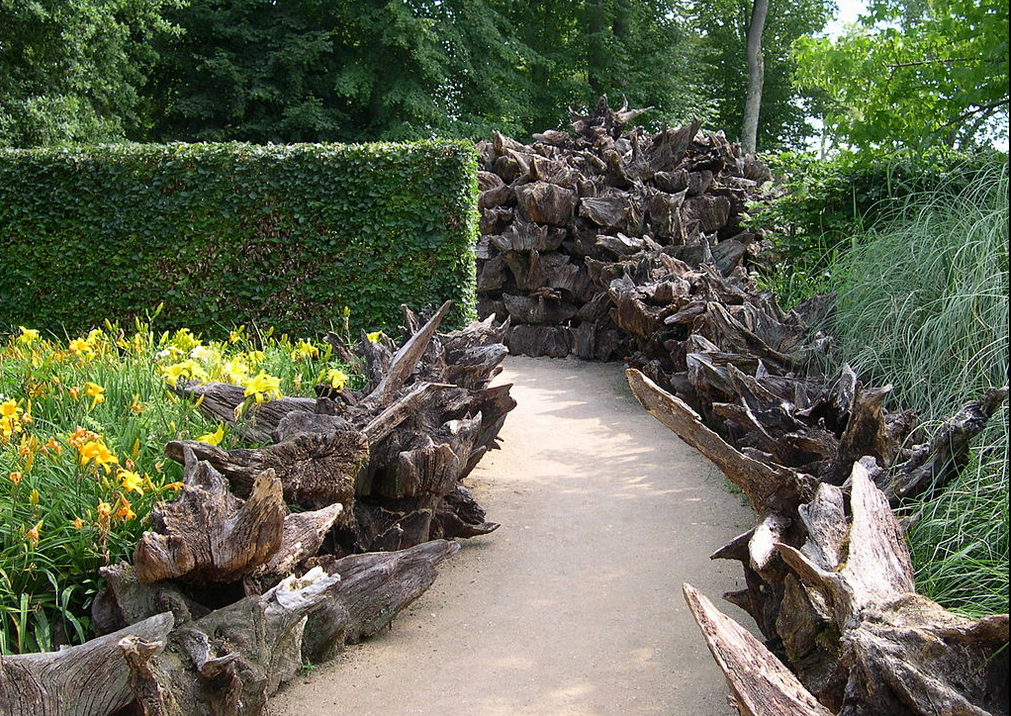
In my yard, road wood is mainly employed to separate garden beds from walkways. At approximately 4,000 square feet (roughly 75’x50’), my backyard is large for downtown but not necessarily for Fayette Urban County, a place mostly developed and expanded after World War II as a city of suburbs. Over the dozen or so years since we have lived in our home, I have crossed this area with a number of raised beds and pathways.
The perimeter footage to wall my beds, which I’ll guesstimate at 800 board-feet, can become quite daunting if you plan to buy your cedar boards from Lowe’s or your local cedar specialist. Some back-of-the-envelope figures: a 1”x10”x8’ cedar board goes for $20 at Lowe’s; purchasing 100 of them would bring me to $2,000–just for the boards to hold my raised beds and define my pathways. That’s American Pharaoh money, requiring access to an amount of disposable dough I don’t have. Road wood and other free materials it is.
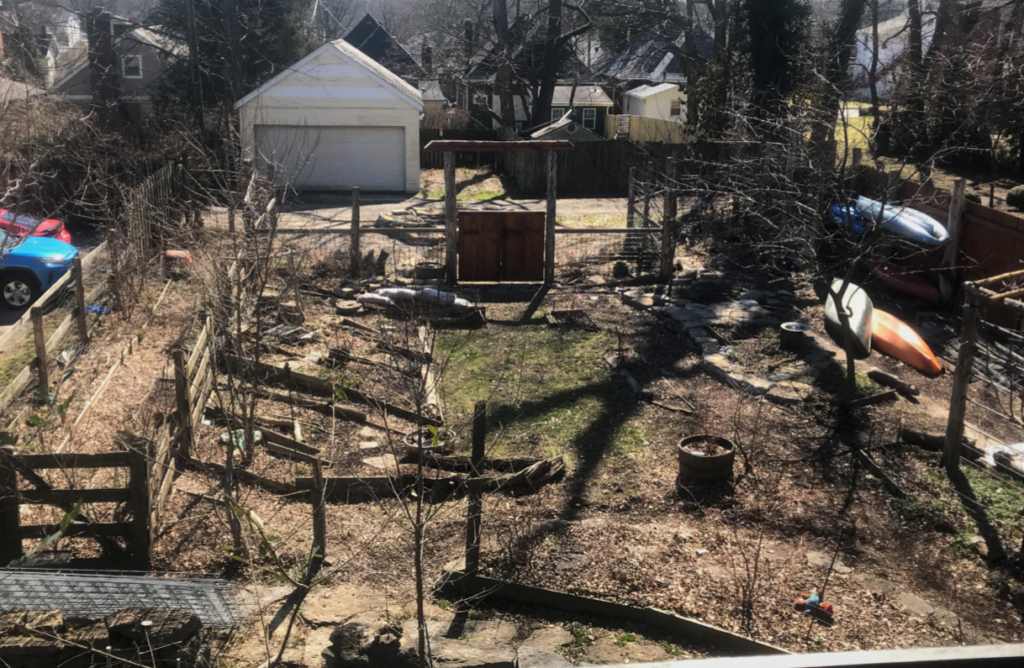
Road wood holds other advantages over store-bought or found boards. Rounded, barked branches contain a greater amount of volume than standard boards. This greater volume means that, as it slowly decomposes, road-wood provides far more nutrients to my soil and the galaxies of life that live within it. Eric Toensmeier and Jonathan Bates, in their 2013 book Paradise Lot, go so far as to use some of their pathway logs to grow edible mushrooms.
To me, the chief attributes of road wood include its water retention capabilities and aesthetic (decaying) singularity. Road wood raised beds operate as a sort of half-submurged hugelkultur. As it slowly decomposes while holding up your garden bed, road wood acts as a natural sponge, absorbing excess water in periods of great rainfall (water that might otherwise swamp your pathways), and slowly releasing it during those long dry summer periods.
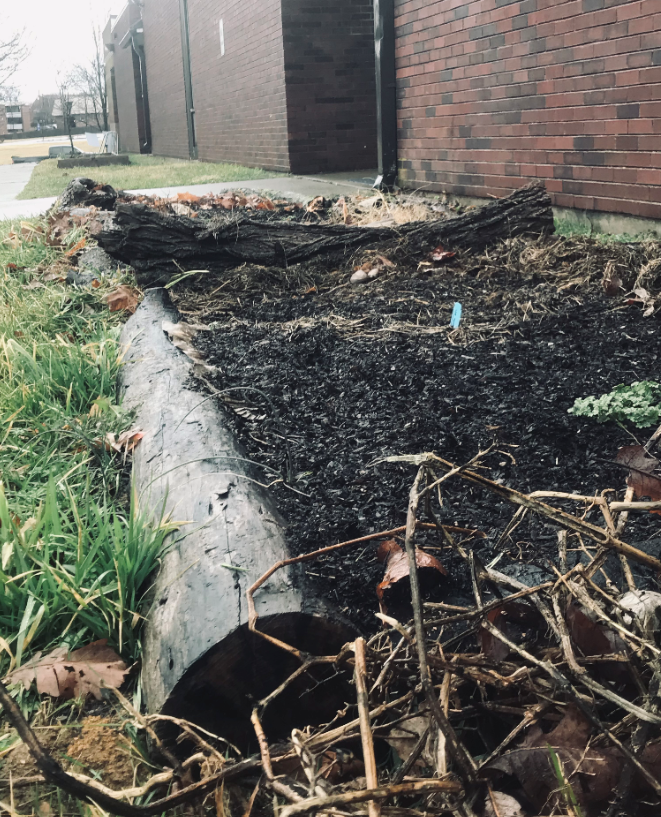
This natural, regenerative function of road wood raised beds is enough to make it beautiful to my eyes, but I’ll go one step further: building with road wood–no two snapped, discarded, rotting throw-aways alike–suits my urban agrarian need for aesthetics. It’s like lincoln logs for grown-ups. Do I want a slow outward bend to constrict an otherwise boring straight-line pathway? Ought I round off a left-hand turn? Build a two-tiered garden bed? My aesthetics are both expanded by and limited to the wood I collect.

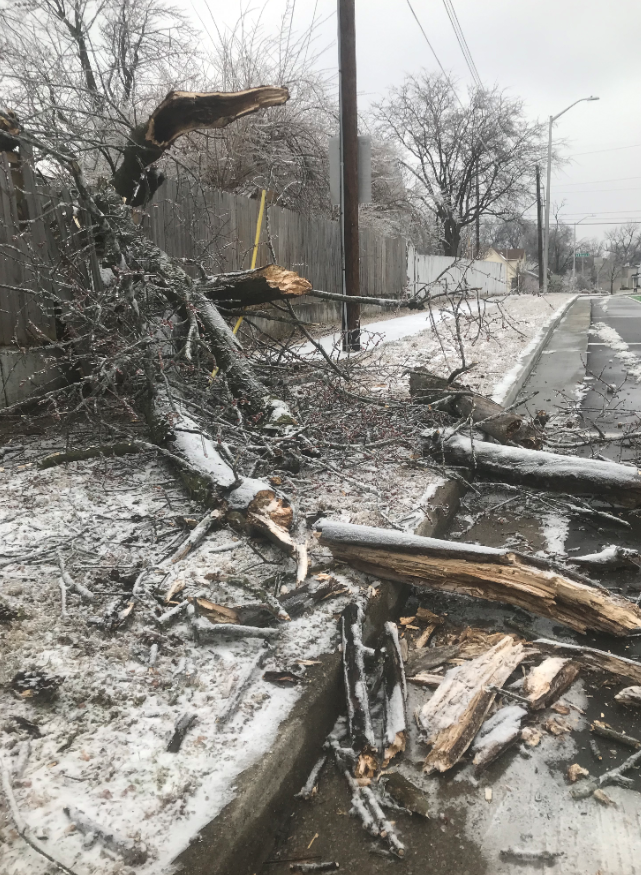
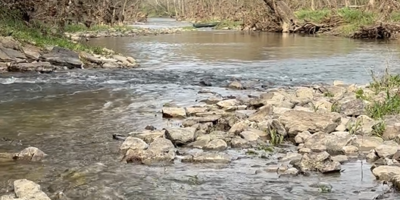
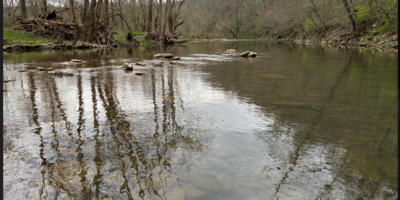

Michael Benton
This is a great article Danny. I’ve always appreciated your spatial derives – more please 🙂
I’ve been collecting wood in the Paris/Bourbon County area this week. A big bonus is a lot of it is at least partially dried and on the way to becoming seasoned fire wood.
Swinging an axe, splitting wood, is one of my favorite meditative physical exertions. I can easily hit the zone when I get a steady rhythm going.